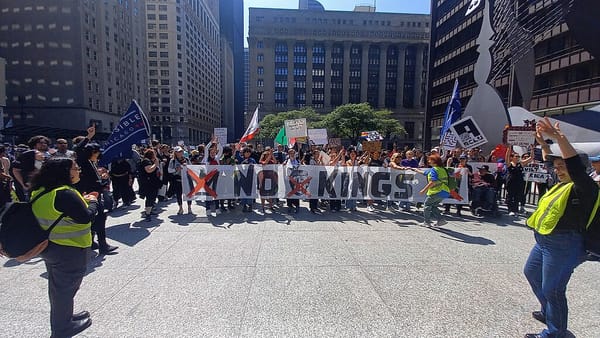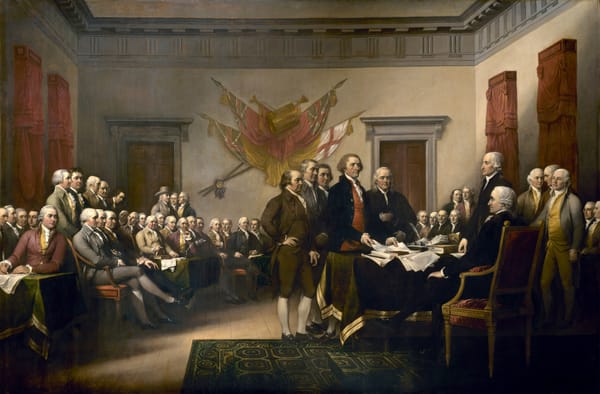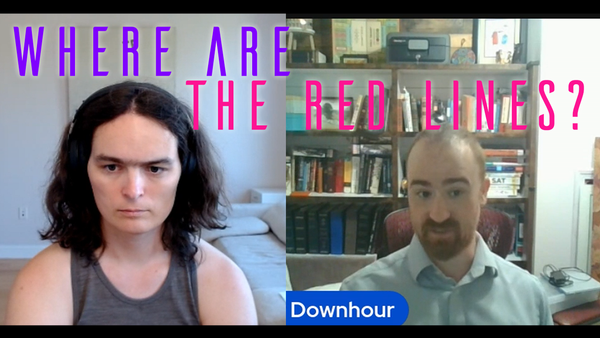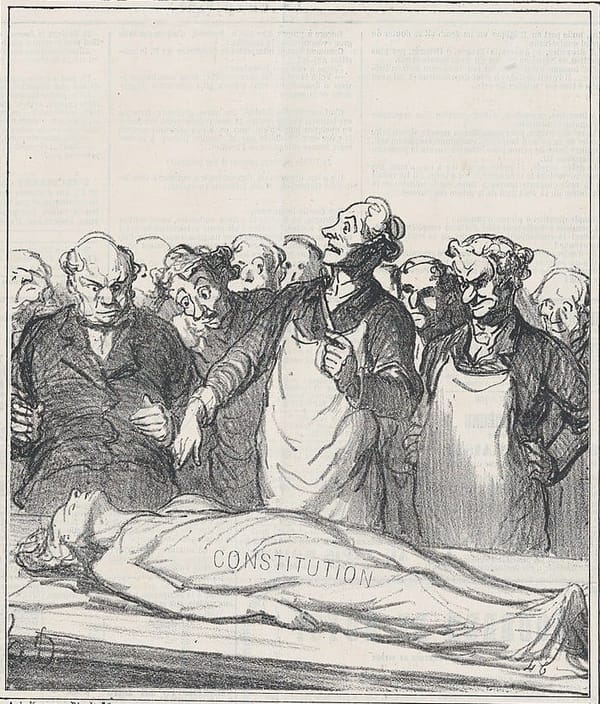Liberal International Order?
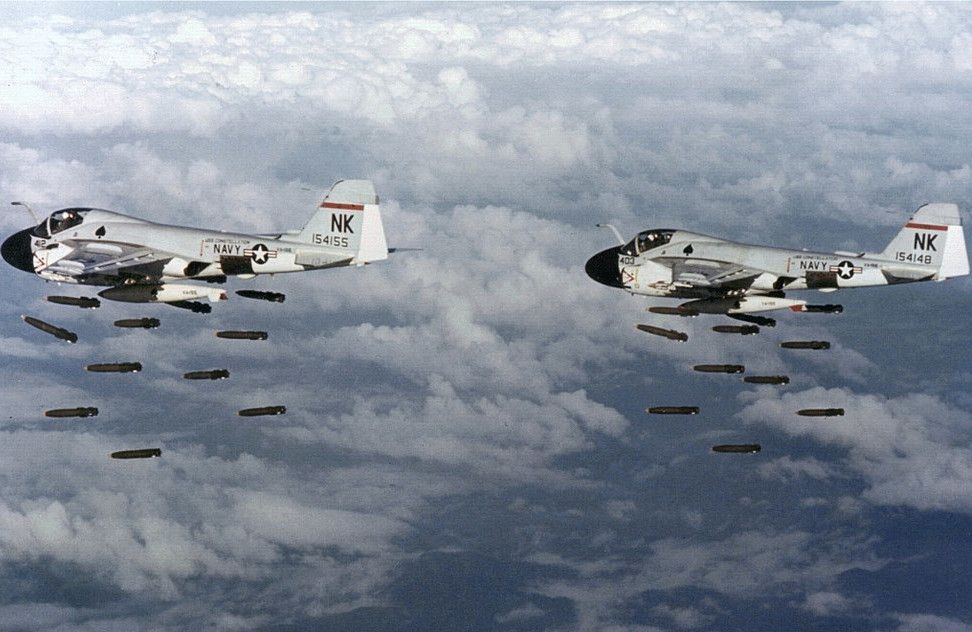
The announcement of a new Washington-based foreign policy think tank that is being funded with seed money from George Soros’s Open Society Foundations and the Charles Koch Institute caused a lot of people in D.C. to squint intensely at their phone and computer screens, wondering if they were reading the words correctly. The Quincy Institute for Responsible Statecraft will launch later this year, named after John Quincy Adams and in honor of his July 4, 1821 speech, where he articulates a vision of an America that does not go “abroad in search of monsters to destroy,” moving away from “endless war and toward vigorous diplomacy.”
Those of us who have been paying attention to inner-Beltway squabbles over foreign policy were not surprised at the Soros-Koch partnership, as the Koch network has made foreign policy a key issue in their overall political agenda in the last five years, while placing a significant emphasis on finding non-traditional allies to engage with in all of their activities (Full disclosure: A quick glance at my LinkedIn profile will show that I have benefited greatly from Charles Koch’s philanthropy).
One of the more predictable responses to this news came from Bill Kristol, former editor of the Weekly Standard and an ardent defender of the liberal internationalist/neoconservative foreign policy consensus. In his distaste, he tweeted out the following: “75 years of a US-led liberal international order, based on a US forward presence and backed by US might, with regional and bilateral alliances and relatively free trade, has enabled remarkable peace and prosperity. But let’s go back to the 1920’s and 30’s!”
It’s a standard rejoinder to those of us who question the legacy of the U.S.’s post-WWII and post-Cold War foreign policy, and there is a lot to unpack, as it contains several empirical claims in which the historical record is much more murky than Kristol suggests. That the world is currently in a period of unparalleled peace and prosperity is true enough, but the claim that this peace and prosperity is due to a forward-leaning, muscular U.S. foreign policy, thereby producing a “liberal international order,” is very contestable.
Peace in our time?
Harvard psychologist Steven Pinker has made famous the argument, in his 2011 tome Better Angels of Our Nature, that over the last several centuries the incidence of war is on the decline, particularly since 1946. But Pinker uses battle deaths as his primary metric, and as University of Minnesota political scientist Tanisha Fazal has demonstrated, doing so neglects lifesaving advances in military medicine over the same time period. Therefore the purported decline of war is much less impressive, as Fazal finds that battle casualties dropped by less than 20 percent from 1946 to 2008. She concludes: “Any apparent decline in war means that war has become less fatal.”
Other metrics also tell us that war is hardly disappearing. As the University of Chicago’s Paul Poast recently showed, there has not been a single year since 1816 without a war, and the number of wars rose in the latter part of the 20th century. When talking about war, there are always issues with interpretation of and incomplete data. But, at the very least, we can say that reports of warfare’s death have been exaggerated.
The absence of a great power war since WWII (in which the rise of nuclear weapons plays a significant role) leads many to gloss over the fact that outside of Europe the Cold War was rather warm, and in certain parts of the world quite bloody. Historian Paul Chamberlin, in his book, The Cold War’s Killing Fields: Rethinking the Long Peace, estimates that more than 20 million people were killed in Cold War-related conflicts. Some 70 percent of them died in what he calls the “bloodlands,” stretching from Lebanon through south Asia and up to Korea. Washington and Moscow certainly didn’t start all of these conflicts, but they helped prolong them with deliveries of cash, weapons, and advisors.
Prosperity through deep engagement?
It is true that the world has gotten significantly richer in the last seven decades, largely due to increasing market liberalization in the global south and east Asia. In Washington many believe that these gains from trade were made possible by an assertive U.S. foreign policy that underwrote freedom of navigation and commerce on the high seas.
According to this argument, without the U.S. Navy guaranteeing that sea lanes stay open, economic disruptions from rogue actors, antagonistic states, and regional instability would impede the free flow of goods. This was the rationale of the Carter Doctrine, developed in the wake of the Iranian Revolution and the Soviet invasion of Afghanistan: any perceived threat to the Persian Gulf region was considered a threat to the U.S.’s interests, and we would use force if necessary to keep the oil flowing freely.
Putting aside the normative question of whether guaranteeing free trade could morally justify war, this vision misunderstands how markets function. Markets are not static and inflexible—quite the opposite. Using the example of oil, political scientists Eugene Gholz and Daryl Press write that:
excessive fears about the consequences of regional instability…are rooted in an unrealistic, static conceptual model of markets in which shocks to one part of an industry—for example, interference with tanker traffic—do not trigger compensating adaptations elsewhere. In reality, the oil market, like most others, rapidly adjusts to shocks through a variety of mechanisms. Most of these adaptations do not require careful coordination, unusually wise stewardship, or benign motives: individuals’ drive for profit triggers most adaptation. These adaptations keep oil flowing, and shortages are short-lived.
Gholz and Press use the historical examples of U.S. trade with WWI belligerents while it was still neutral, and the trade of oil-producing countries during the Iran-Iraq war. As Gholz has written elsewhere, merchants and investors
do not stop their pursuit of wealth when war breaks out. Instead, they adapt. So while belligerents suffer terrible economic consequences from war’s direct destruction of productive capacity…wars merely reshuffle trade and investment patterns in the rest of the world. … Commerce flows through the commons and even into war zones, despite political-military instability.
While it is true, particularly in the last three to four decades, that the world has seen dramatic reductions in poverty due to international trade, what U.S. foreign policy had to do with it is far from obvious.
Liberal international order?
There has been debate in the Trump era about whether U.S. primacy in the Cold War and beyond created a “liberal international order,” particularly after the collapse of the Soviet Union. The U.S. entered into a unipolar era, acting as global policeman with a foreign policy that emphasized, at least rhetorically, democratization, human rights, and market liberalization.
There’s an inherent tension in referring to the geopolitical arrangements that emerged then as a “liberal” order, because the very act of ordering in international politics is often coercive and illiberal, as international security expert Patrick Porter has pointed out. You often find yourself employing incredibly illiberal means towards a supposedly liberal end—ends that often don’t materialize.
Was it liberal to partner with Nazi collaborators in Albania in the 1940s in an effort to topple the Soviet-backed regime? The lies that got us into the Iraq war certainly made use of liberal language, when we were told Iraqis would greet us as liberators as a new democracy would be established in the heart of the Middle East, but what about the reality? Were the U.S.’s 64 attempts at covert regime change (the overwhelming majority of which failed) from 1947 to 1989 part of the liberal ordering? Research shows that states targeted by the U.S. for regime change in the Cold War were more susceptible to outbreaks of civil war and mass killing—surely that factors into whether or not our attempted ordering of the world was “liberal.” What about the war on terror, with its massive violations of privacy, extrajudicial killing, torture, and unconstrained executive authority, not to mention the nativism, demagoguery, and populism it has helped inspire? There are many more examples like these to draw on.
Not every foreign policy decision of the last 75 years has been bad. But many have been, so any debate needs to consider the full picture, and not just the fairytale version we tell ourselves in order to feel good. Sweeping use of the language of liberalism to justify and promote U.S. foreign policy is inappropriate. And while we should be happy to be alive in 2019 as opposed to 1819, or even 1975—there is much about the modern world to celebrate!—criticism of American foreign policy is not tantamount to diplomatic, economic, or military luddism.
Featured Image is U.S. Navy A-6A Intruder all-weather bombers, in 1968

